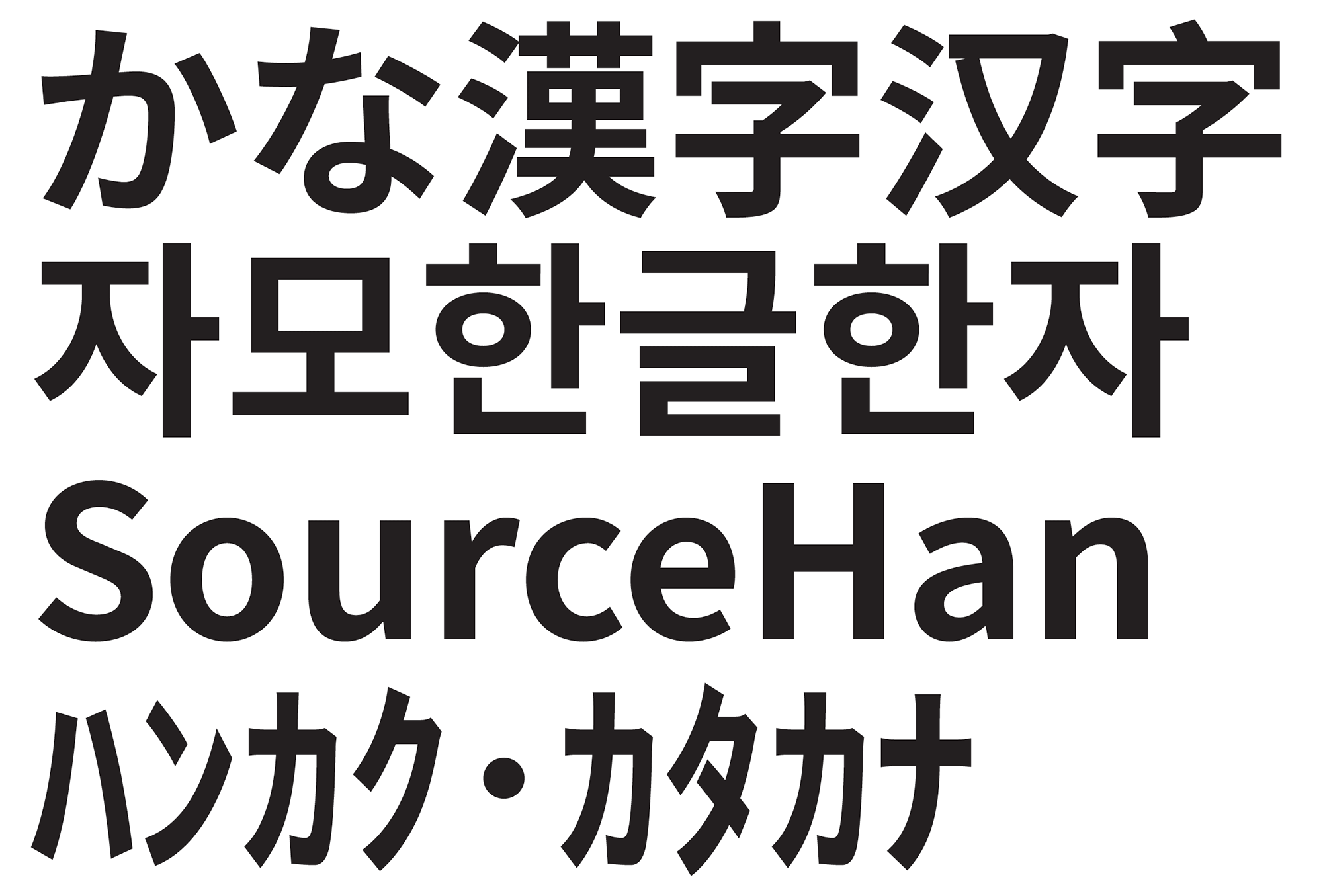
The new open source Source Han Mono (源ノ等幅 in Japanese, 본모노 in Korean, 思源等宽 in Simplified Chinese, 思源等寬 in Traditional Chinese—Taiwan, and 思源等寬 香港 in Traditional Chinese—Hong Kong SAR) typeface was released only four days ago, and this article provides details about its 70-font Super OTC (OpenType/CFF Collection). This article simply serves as an announcement for the Version 1.001 update that was released today. There are two main changes about which users should be aware:
- The alignment zones and hinting parameters for the FDArray elements whose glyphs were derived from Source Code Pro were improved. Many thanks to Twitter user @KiYugadgeter for raising this issue here, and for confirming the fix here.
- Our designer, Ryoko Nishizuka (西塚涼子), opted to improve the glyphs for the half-width katakana (半角片仮名) that were expanded to have 667-unit horizontal advances via anisotropic techniques. The image above shows glyphs from Source Han Sans, then from Source Han Mono Version 1.000, and then from Source Han Mono Version 1.001.
I also updated the 143-font Source Han Mega OTC and 216-font Ultra OTC in the Source Han & Noto CJK Mega/Ultra OTCs project earlier today.
Enjoy!





